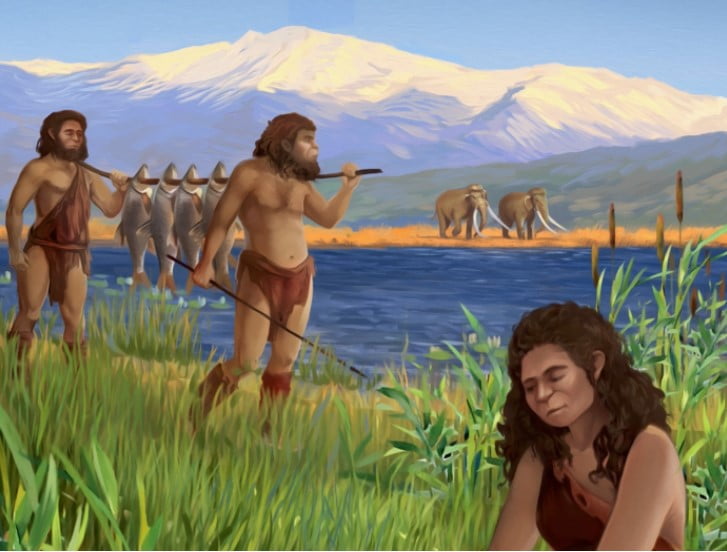Israeli researchers have used artificial intelligence (AI) to answer questions about the early humans who lived in the Hula Valley in northern Israel, discovering how smart our ancestors really were when it came to making tools.
A new study led by Dr. Meir Finkel of Tel Aviv University and Prof. Gonen Sharon of Tel-Hai College utilized an algorithm that helped them classify archaeological artifacts according to geological location.
Dr. Ben Dor of the Geological Survey of Israel developed the algorithm based on machine learning models that also involved several computational steps.
The researchers wanted to know where early humans had found the resources to make the thousands of handaxes present in two ancient Hula Valley sites: Gesher Benot Ya’aqov, dated to 750,000 Years Before Present (YBP), and Ma’ayan Barukh, dated to 500,000 YBP, both part of the Acheulian culture.
“In other words, to make the 3,500 handaxes found at Ma’ayan Barukh alone, early humans needed 3.5 tons of flint. But where did they obtain such a huge amount of flint?” asked Prof. Sharon.
The researchers located possible flint sources in a wide field survey including places like the Safed Mountains, Dishon Plateau, and the Jordan. After collecting the flint samples, they used Dr. Ben Dor’s algorithm to match the flint to a sample of 20 handaxes – 10 from Gesher Benot Ya’aqov, 10 from Ma’ayan Barukh.
“Through the computational process we discovered that all 20 archaeological artifacts were made of flint from a single source: the Dishon Plateau’s flint exposures dating back to the Eocene geological epoch, about 20km west of the Gesher Benot Ya’aqov and Ma’ayan Barukh sites,” said Dr. Finkel.
“To procure suitable raw materials for producing their vital handaxes, they planned and carried out 20km hikes that included an ascent from 70 to 800 meters above sea level,” said Prof. Ben-Yosef of Tel Aviv University, who collaborated on this project along with Dr. Oded Bar and Dr. Yoav Ben Dor from the Geological Survey of Israel, and Ofir Tirosh of the Hebrew University of Jerusalem.
“Our findings clearly indicate that humans living in the Hula Valley hundreds of thousands of years ago, probably hominids of the homo erectus species, possessed high cognitive and social capabilities.”
The study was published in the international Geoarchaeology journal.
Related posts

Israeli AI Safety Tool Among TIME’S Best Inventions For 2024

TAU Team Discovers Mechanism To Eliminate Cancerous Tumors

Ashdod Port Investing In Startups As Part Of Innovation Strategy




Facebook comments